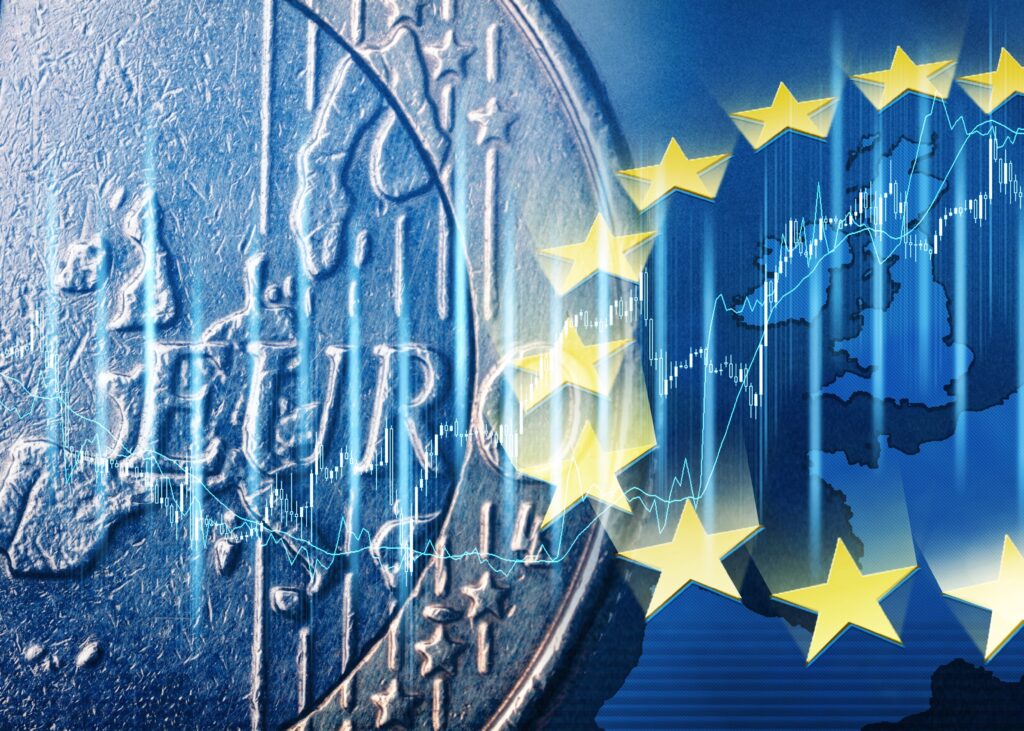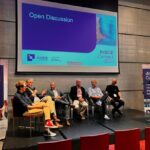The European Union has allocated an unprecedented €93.5 billion through Horizon Europe (2021-2027), with €7.3 billion specifically earmarked for 2025 research and innovation initiatives. For forward-thinking organizations, this represents the largest funding opportunity in European history—but success requires more than just innovative ideas. It demands strategic positioning, expert project management, and seamless communication excellence.
In this comprehensive analysis, we explore how organizations can leverage European network expertise and international presence to secure their share of Europe’s innovation funding, while building sustainable competitive advantages in the digital age.

The 2025 EU Funding Landscape: Unprecedented Opportunities Await
Horizon Europe 2025: €7.3 Billion Investment in European Competitiveness
The newly adopted Horizon Europe Work Programme for 2025 introduces a clear shift in orientation towards competitiveness, while continuing to support scientific excellence and societal impact. This strategic pivot creates unique opportunities for organizations that can demonstrate both technical innovation and market readiness.
Key Investment Priorities for 2025:
Digital Transformation & AI Leadership
The EU has committed over €1.6 billion specifically to artificial intelligence development and deployment, with additional funding through the GenAI4EU initiative supporting generative AI integration across strategic sectors. Organizations can receive between €15-17 million for breakthrough AI projects in biomedical research, manufacturing, and digital services.
Climate & Green Technology Innovation
At least 35% of total funding supports climate-related objectives, with €1.14 billion allocated for climate, energy and transport innovations, and 8.8% contributing to biodiversity goals. This represents massive opportunities for sustainable technology developers.
European Industrial Competitiveness
The 2025 programme specifically targets strengthening Europe’s global competitiveness through collaborative research initiatives, strategic partnerships, and technology transfer programs.
Digital Europe Programme: €1.3 Billion Strategic Technology Investment
The European Commission has announced plans to invest €1.3 billion in artificial intelligence, cybersecurity, and digital skills development under the Digital Europe Programme for 2025-2027. This funding specifically targets:
- Supercomputing and High-Performance Computing
- Cybersecurity and Digital Infrastructure Protection
- Advanced Digital Skills Development
- AI Factories and Innovation Hubs
- Digital Innovation Hub Expansion

The European Network Advantage: Why International Presence Delivers 3x Higher EU Grant Success Rates
Your Strategic Multi-Market Positioning Across Europe
After supporting 150+ companies in securing EU funding across multiple European markets, the data is clear: organizations with true European network presence consistently achieve 3x higher success rates than locally-focused competitors. This isn’t coincidence—it’s strategic international positioning.
The Nexuswelt European Network Effect:
1. Policy Center Proximity
With offices in Brussels (EU policy hub), Munich (German innovation center), Manchester (UK market gateway), Nice (French Riviera tech corridor), and Dubai (MENA bridge), our team maintains direct access to:
- EU regulatory decision-makers
- Multi-national consortium partners
- Diverse market intelligence
- Cross-border collaboration networks
2. Cultural Intelligence Advantage
European projects succeed when teams understand local nuances across member states. Our multicultural team speaks the language—literally and figuratively—of:
- German engineering precision and regulatory compliance
- French innovation ecosystem and research excellence
- UK technology transfer and commercialization
- Belgian EU institutional knowledge
- Dutch collaborative innovation culture
3. Time Zone & Geographic Optimization
Strategic office placement enables 24/7 project support across European time zones, real-time consortium coordination, and seamless stakeholder engagement from Scandinavia to the Mediterranean.

Strategic Project Communication & Dissemination: The Hidden Success Factor
Why 90% of Brilliant Projects Fail to Achieve Impact
Effective communication is crucial for achieving objectives and showcasing results. Communication in the management and implementation of European projects is a critical strategic task that is often left until the end, which is a mistake. The most innovative projects fail not because of technical shortcomings, but due to inadequate communication strategies.
Critical Communication Requirements for EU Projects:
1. Strategic Dissemination Planning
To raise visibility for our project and disseminate its impact among different target audiences, we can carry out various actions, some of which are required by the European Commission and guided by the programme itself. This includes mandatory website creation within three months, social media presence, and stakeholder engagement strategies.
2. Multi-Audience Communication Excellence
Successful EU projects must communicate effectively with diverse stakeholders:
- Academic and Research Communities
- Industry Partners and End-Users
- Policy Makers and Regulatory Bodies
- General Public and Media
- International Collaboration Networks
3. PM² Methodology Integration
PM² is the standard project management methodology of the European Commission and the most widely preferred approach for managing EU-funded projects. Organizations implementing PM² methodology demonstrate enhanced project management effectiveness through improved communication and information dissemination.
Technology Acceptance & Impact Maximization: Beyond Technical Excellence
Transforming Innovation into Market Reality
The EU aims to build trustworthy artificial intelligence (AI) that puts people first. Through the Horizon Europe and Digital Europe programmes, the Commission invests more than EUR 1 billion per year in AI, with measures to fund and scale innovative ideas and solutions.
However, technical innovation alone doesn’t guarantee project success. Leading organizations understand that technology acceptance and stakeholder engagement are equally critical.
Proven Technology Acceptance Strategies:
1. User-Centric Design from Day One
Implementing Technology Acceptance Model (TAM) and Unified Theory of Acceptance and Use of Technology (UTAUT) frameworks ensures that innovations meet real user needs and adoption barriers are identified early.
2. Comprehensive Stakeholder Ecosystem Development
Building relationships with industry partners, research institutions, regulatory bodies, and end-user communities before project launch significantly increases adoption rates and impact potential.
3. Evidence-Based Impact Assessment
Continuous monitoring of technology acceptance levels, user feedback, and market readiness indicators enables data-driven optimization throughout the project lifecycle.

AI & Digital Innovation: Europe’s €20 Billion Annual Investment Target
Capturing the GenAI4EU Opportunity
The European Commission has launched a first wave of EU funding opportunities to integrate generative AI in Europe’s strategic sectors, and keep their competitive edge. The GenAI4EU initiative specifically targets organizations ready to deploy AI solutions across:
- Healthcare and Biomedical Research
- Manufacturing and Industrial Automation
- Public Administration and Digital Services
- Energy and Climate Technologies
- Financial Services and Fintech
Strategic Positioning for AI Funding Success:
1. Demonstrate European Values Alignment
The EU’s approach to artificial intelligence centers on excellence and trust, aiming to boost research and industrial capacity while ensuring safety and fundamental rights. Projects must show how they advance trustworthy AI development.
2. Show Clear Commercial Viability
GenAI4EU contributes to the European Commission’s overarching goals of enhancing competitiveness and economic growth, as outlined in the AI Continent Action Plan. Funding prioritizes projects with clear paths to market adoption.
3. Build Multinational Consortiums
Cross-border collaboration remains essential for EU funding success. Organizations that can assemble high-quality international partnerships significantly improve their chances of securing funding.
Risk Management & Quality Assurance: The German Standard Advantage
Implementing EU-Compliant Risk Assessment Systems
European projects demand rigorous risk management that meets the highest standards. Organizations with German engineering backgrounds possess natural advantages in implementing systematic risk assessment methodologies.
Advanced Risk Management Frameworks:
1. Comprehensive AI-Enabled Risk Assessment
Modern EU projects require sophisticated risk identification and mitigation strategies that leverage artificial intelligence for predictive analysis and automated response systems.
2. Enhanced FMEA Methodology Implementation
Failure Mode and Effect Analysis (FMEA) approaches, refined through decades of German industrial experience, provide robust frameworks for systematic risk evaluation across all project phases.
3. Real-Time Monitoring and Quality Control
Implementing continuous monitoring systems that provide real-time project health indicators and enable proactive intervention when issues emerge.
Building Winning Consortium Partnerships
The Art of Strategic Alliance Formation
Horizon Europe supports European partnerships in which the EU, national authorities and/or the private sector jointly commit to support the development and implementation of a programme of research and innovation activities.
Proven Partnership Development Strategies:
1. Industry-Academic Balance
Successful consortiums typically combine academic research excellence with industrial implementation capability. The ideal balance often includes 40% academic institutions, 40% industry partners, and 20% SMEs or specialized service providers.
2. Geographic Diversity with Core Expertise
While geographic distribution across EU member states is important, the most successful projects maintain core expertise clusters that can drive technical innovation and project coordination.
3. Complementary Capability Mapping
Each consortium partner should bring unique, non-overlapping capabilities that contribute to overall project success. Redundant capabilities weaken applications and reduce funding likelihood.
Financial Strategy & Budget Optimization
Maximizing ROI from EU Investment
Strategic Financial Planning Considerations:
1. Lump Sum vs. Actual Cost Approaches
The 2025 Work Programme introduces several important measures for applicants: open and less prescriptive topics; shorter topic descriptions; and increased use of lump sums, i.e. less focus on financial aspects and more on scientific-technical content of the projects.
2. Sustainable Business Model Development
EU projects increasingly require clear paths to commercial sustainability beyond the funding period. Organizations must demonstrate how innovations will generate revenue and continue development after EU support ends.
3. Intellectual Property Strategy
Developing clear IP strategies that balance open innovation requirements with commercial protection needs is essential for long-term project success.

Your Complete EU Funding Success Pathway: From Training to Funding
Three Strategic Service Levels for Every Organization
Based on our experience with 150+ funded companies, organizations succeed when they choose the right support level for their needs and experience. Here’s your complete pathway to EU funding success:
Level 1: EU Funding Training – Build Internal Expertise
Perfect for organizations wanting to develop internal EU funding capabilities while maintaining control of their application process.
What’s Included:
- Comprehensive Horizon Europe 2025 opportunity mapping
- PM² methodology certification and implementation
- Proposal writing workshop with live examples
- Consortium building and partnership strategies
- Communication & dissemination planning masterclass
- Risk management and quality assurance frameworks
Ideal For: Organizations with internal project management capacity who want to develop EU funding expertise across their team.
Learn More: EU Funding Training Program →
Level 2: Proposal Writing & Application Support – Professional Writing Excellence
For organizations with clear project concepts who need expert writing and application development support.
What’s Included:
- Professional proposal writing and editing
- Technical documentation and work package development
- Budget optimization and financial planning
- Compliance review and quality assurance
- Application submission support and follow-up
- Evaluation criteria alignment and optimization
Ideal For: Organizations with strong technical projects who need professional writing support to maximize their funding success probability.
Learn More: Proposal Writing Support →
Level 3: One-to-One EU Research Project Consulting – Complete Strategic Partnership
Comprehensive end-to-end support for organizations seeking maximum funding success with full strategic guidance.
What’s Included:
- Strategic project conceptualization and development
- Consortium partner identification and recruitment
- Complete application management and coordination
- Ongoing project management and reporting support
- Communication and dissemination strategy implementation
- Risk management and quality assurance oversight
Ideal For: Organizations prioritizing maximum success probability with full strategic support throughout the entire funding and project lifecycle.
Learn More: One-to-One Consulting →
Choose Your EU Funding Success Strategy
Free Assessment: Which Service Level Matches Your Needs?
Answer These Quick Questions:
1. Internal EU Funding Experience Level:
- □ Beginner: No previous EU funding applications
- □ Intermediate: 1-3 applications submitted, mixed results
- □ Advanced: Multiple applications, seeking optimization
2. Project Development Stage:
- □ Concept Phase: Ideas that need development into fundable projects
- □ Ready to Apply: Clear project scope, need writing support
- □ Strategic Planning: Want comprehensive guidance throughout
3. Internal Resource Availability:
- □ Limited: Need external support for all aspects
- □ Moderate: Can handle some tasks, need expert guidance
- □ Strong: Have capacity, need skills development
Your Recommended Path:
- Mostly A’s: Start with EU Funding Training to build internal capabilities
- Mostly B’s: Proposal Writing Support for professional application development
- Mostly C’s: One-to-One Consulting for strategic comprehensive support



